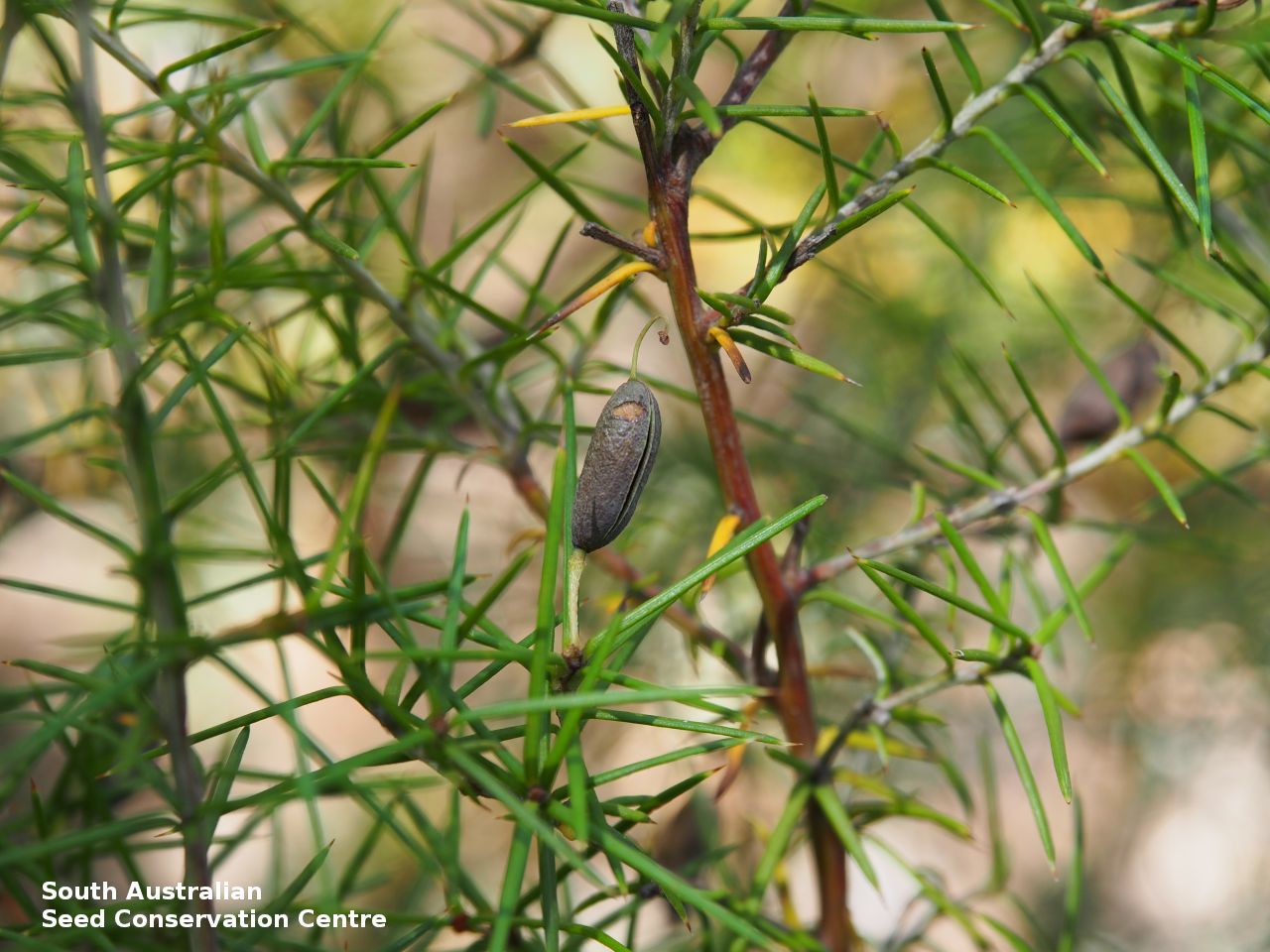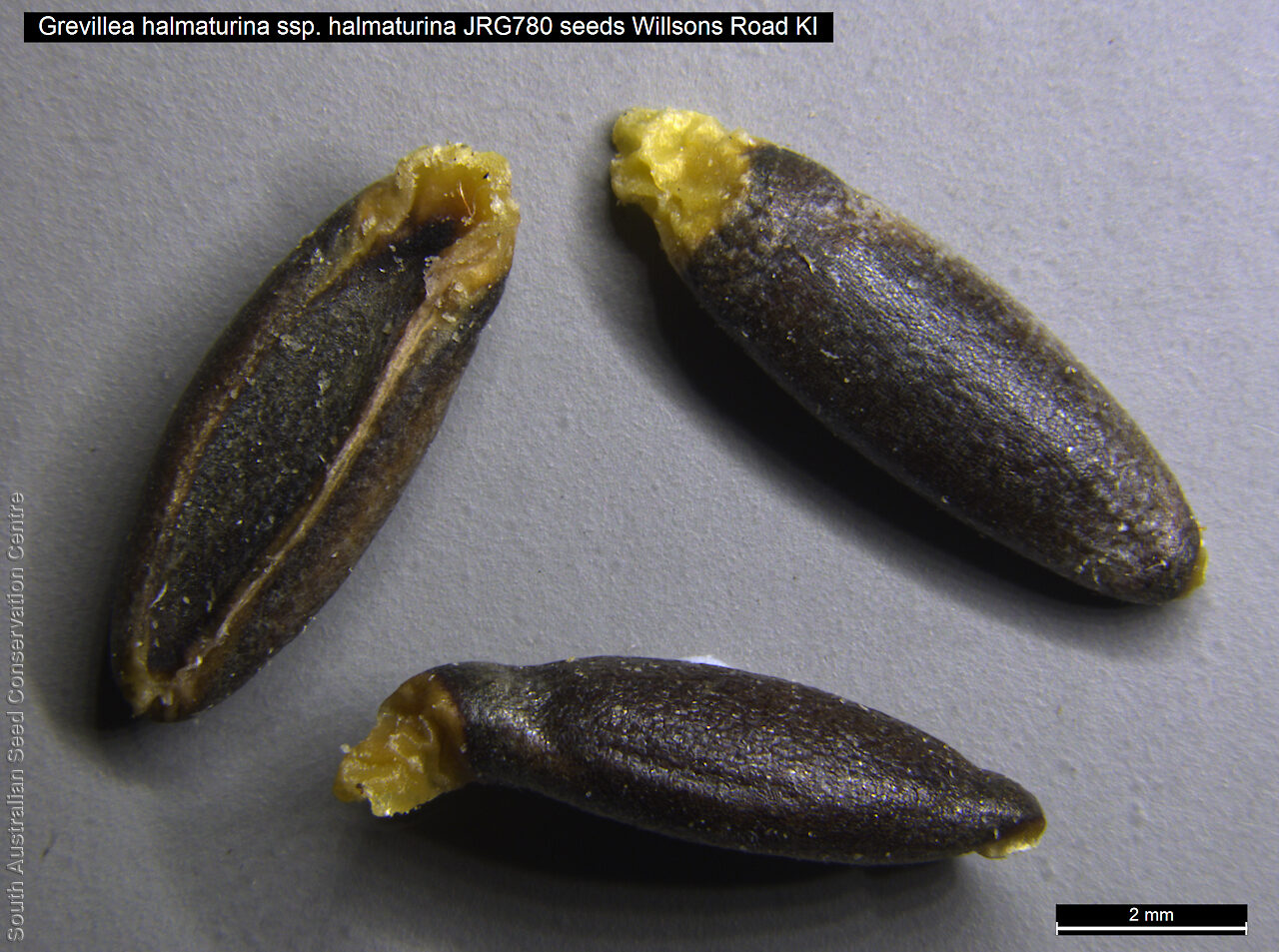




















Botanical art
Prior names
Grevillea linearifolia, partly
Grevillea parviflora, partly
Grevillea parviflora var. acuaria, partly
Common names
Kangaroo Island Small-leaf Grevillea
Prickly Grevillea
Small-flower Grevillea
Etymology
Grevillea after Charles Francis Greville (1749-1809), a co-founder of the Royal Horticultural Society. Halmaturina is derived from Halmaturus, a now obsolete generic name once applied to kangaroos, and is from the Greek 'halme' meaning a leap or bound, and commonly used as an epithet for species from Kangaroo Island.
Distribution and status
Endemic to South Australia and found on the eastern and western parts of Kangaroo Island, growing on ironstone and grey silty soils within woodland and heath communities. Native. Uncommon in South Australia.
Herbarium regions: Kangaroo Island, South Eastern
NRM regions: Kangaroo Island, South East
AVH map: SA distribution map (external link)
Plant description
Spiny-leaved shrub to 2 m high, branchlets with appressed hairs. Leaves widely spreading, dense, rigid, linear, to 3 cm long and 1 mm wide, upper side with 2 lateral veins and a mid-vein often divided into 3 veins, lower side with 2 persistently sericeous narrow grooves between the recurved margins and midrib, mucro long, straight, sharp. Inflorescence a small cluster of 7-16 pale-pink or white flowers at terminal on branchlets or on short axillary shoots. Flowering between June and October. Fruits are dark brown to black capsule to 13 mm long, smooth with a usually persistent terminal curved style. Seeds are narrow-oblong, with a longitudinally groove on one side and a blunt aril-like body at one end. Seed embryo type is linear fully developed.
Seed collection and propagation
Collect seeds between November and December. Collect mature capsules, those that are turning brown or black but have not split, by hands or place small breathable bags over immature capsules or branchlets to collect maturing seed. Place the capsules in a tray and leave to dry for a weeks or two for them to split naturally. Use a sieve to separate the unwanted material. Store the seeds with a desiccant such as dried silica beads or dry rice, in an air tight container in a cool and dry place. This species has morphophysiological dormancy and can be difficult to germinate.
Fire response
Obligate re-seeder, spiny seedlings observed in fire scar in proximity to burnt remnants of adult plants. No re-sprouting of adult plants observed in fire scar proper but some adult plants noted re-sprouting on edge of fire scar where partly scorched.
Longevity: 10–15 years.
Time to flowering: 3–4 years
Recovery work
In 2020 populations of this species were assessed in the first year post-fire. A total of 880 seeds were collected from of an unburnt roadside reserve population on the eastern end of Kangaroo Island. Germination screening testing the response to fire cues will be undertaken in 2021. This project work is supported by the Australian Government through the Wildlife & Habitat Bushire Recovery program.
| Location | No. of seeds (weight grams) | Number of plants | Date collected | Collection number Collection location | Date stored | % Viability | Storage temperature |
|---|---|---|---|---|---|---|---|
| BGA | 880 (12.800 g) | 50 | 13-Dec-2020 | JRG780 Kangaroo Island | 28-Jun-2021 | 100% | -18°C |
Number of plants: This is the number of plants from which the seeds were collected.
Collection location: The Herbarium of South Australia's region name.
% Viability: Percentage of filled healthy seeds determined by a cut test or x-ray.